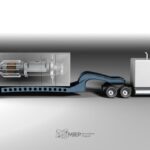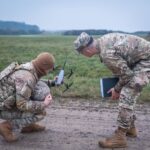
5D Robotics Inc., yesterday said it is collaborating with Finmeccanica’s DRS technologies, Segway Inc, and the Army to develop robots to lighten the soldier’s workload and save lies. The company, a robotics software company that integrates human behaviors with leading robotics hardware, said its proprietary Behavior Engine (BE™) software will be integrated into robot platforms created by Segway and DRS. BE has been shown to lower human workload, reduce training time and make it easier for humans to interact with…

 By
By 











